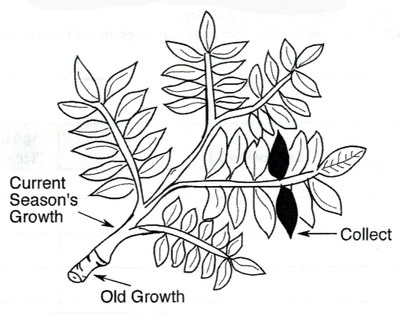
Jul 19, 2021Pecan leaf samples’ instructions shared for Oklahoma
Maintaining proper nutrition is vital to a successful pecan orchard. A balance of proper nutritional levels will provide the best conditions to produce a consistent crop.
Applying unneeded fertilizer without knowing nutritional levels can be an unnecessary expense, detrimental to the environment, and harmful to the health of your pecan trees. Inadequate fertilization may affect the availability of other nutrients, can reduce growth, and may reduce cold hardiness and the overall health of the trees.
Soil samples are useful to determine pre-plant nutrition needs and soil pH but the most reliable indicator of pecan tree fertility needs is leaf analysis. Leaf analysis can be used to diagnose or confirm nutrient problems after symptoms appear. More importantly, these tests can determine nutrient shortages or excesses before symptoms develop or yield is reduced. This service is available through the Oklahoma State University (OSU) County Extension Centers across Oklahoma. For a list of the County Extension Offices – http://countyext2.okstate.edu.
To ensure accurate results, the following instructions should be followed:
- Collect leaf samples in JULY.
- Do not mix varieties into one sample. Native trees from one area may be sampled as one variety.
- Samples should be from uniform trees. It may be from one tree or several acres. Different soil types and management practices may need separate leaf samples.
- Collect 100 leaflets for each sample.
- Select the middle pair of leaflets located on the middle leaf of current season’s growth. Remove leaves with a downward or backward pull so that the leaf stem remains attached to the leaf.
- Choose leaves from accessible shoots on different sides of the trees. Do not collect from suckers, water sprouts, or limbs that do not receive sunlight.
- Avoid leaves with insect, disease, or mechanical injury or leaves that are not representative of the sample.
- Do not use galvanized containers, rubber gloves or come in contact with materials that may contaminate the samples.
- Remove spray residue or dirt by dipping leaves in tap water for one minute or less.
- After washing, spread the leaflets out to air-dry until they will crumble. Don’t expose to direct sunlight or heat to dry.
- Place dry leaflets in a paper bag and return to the county extension office.
- Provide identification for each sample when presenting to the extension office.
Samples will be sent to the OSU Soils, Water, and Forage Laboratory for analysis. The fee for each sample is $20. Results of analysis will be returned to the extension office for nutrient recommendations.
– Becky Carroll, Oklahoma State University







